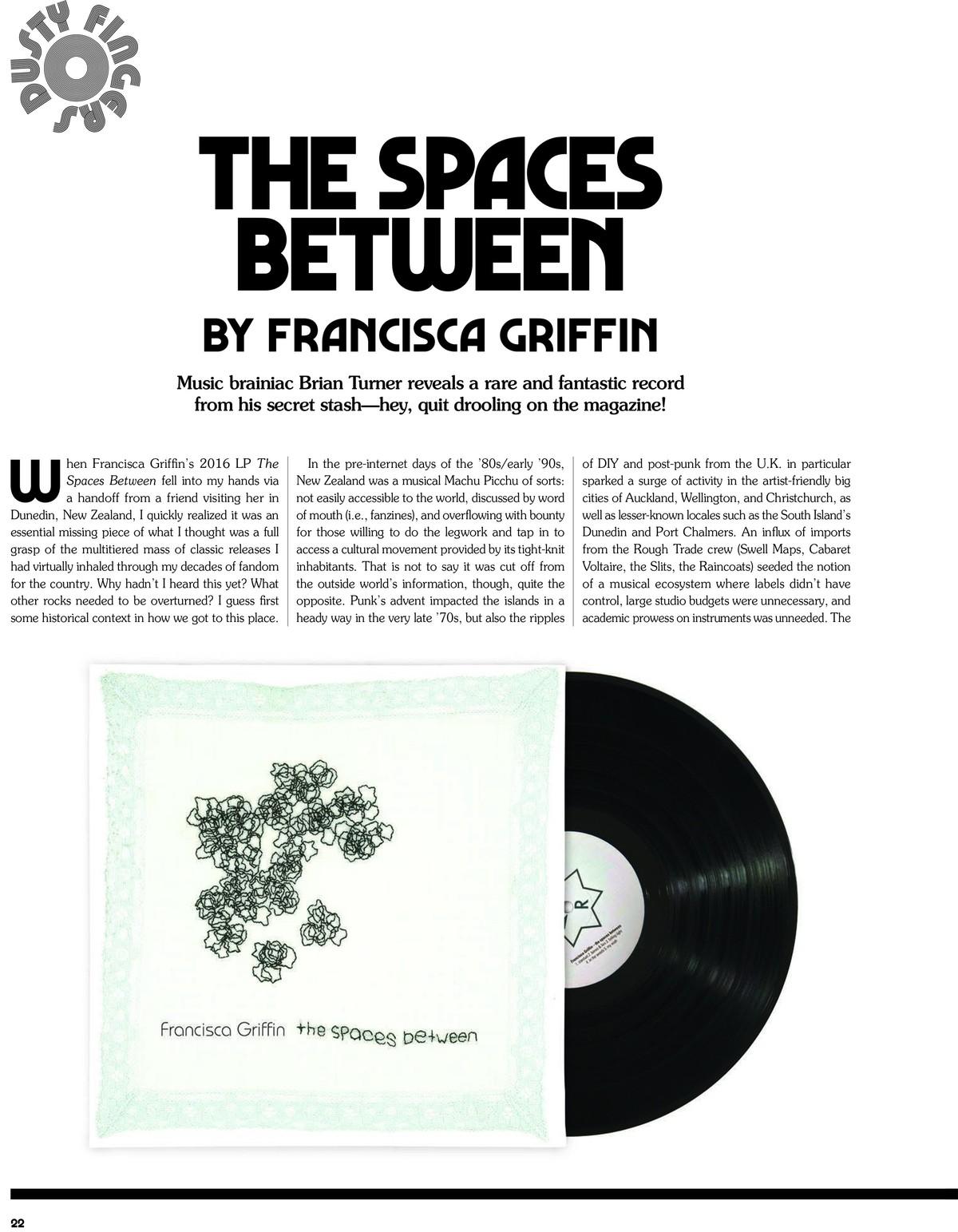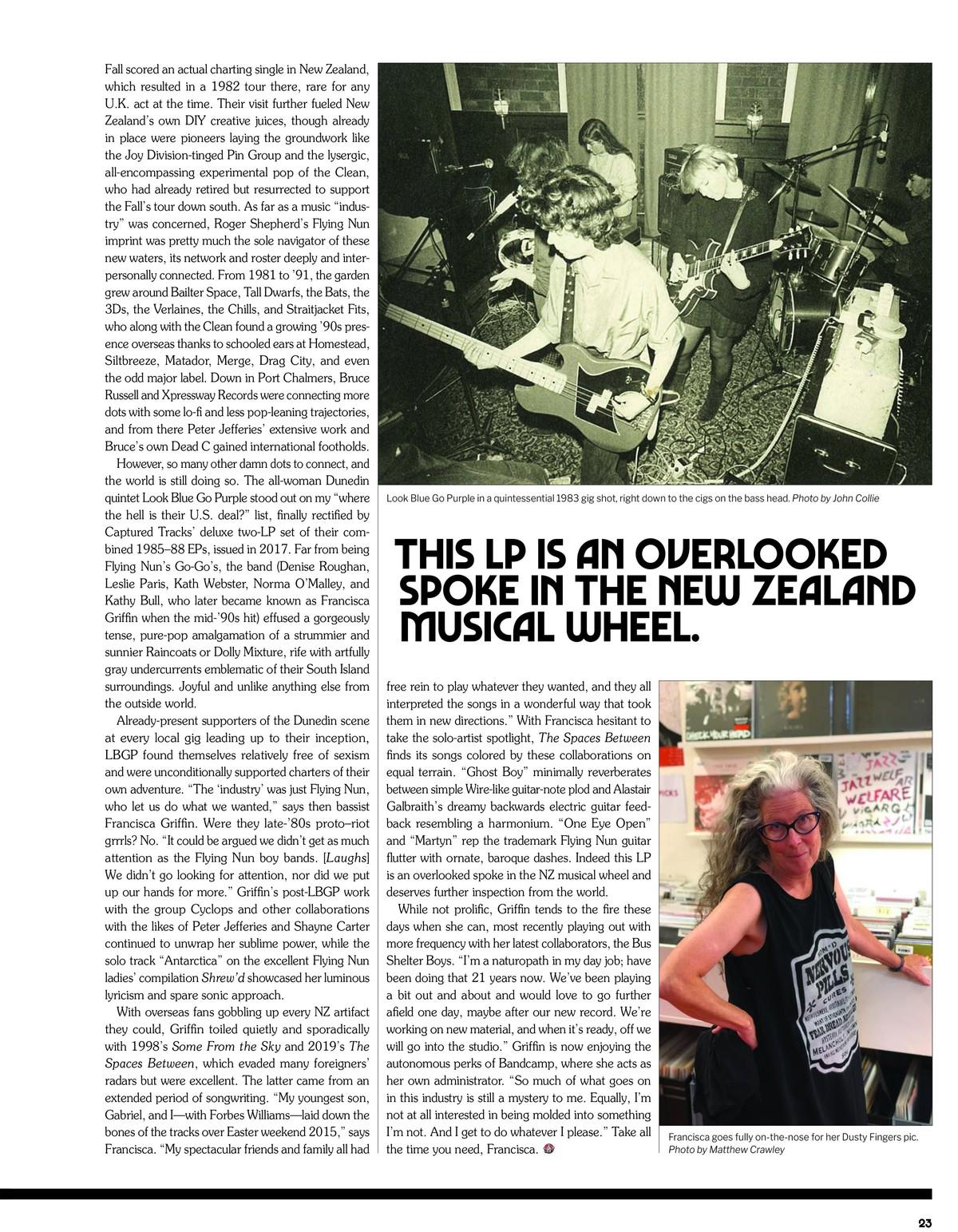Dusty Fingers
The Spaces Between
Music brainiac Brian Turner reveals a rare and fantastic record from his secret stash—hey, quit drooling on the magazine!
September 1, 2023


When Francisca Griffin’s 2016 LP The Spaces Between fell into my hands via a handoff from a friend visiting her in Dunedin, New Zealand, I quickly realized it was an essential missing piece of what I thought was a full grasp of the multitiered mass of classic releases I had virtually inhaled through my decades of fandom for the country. Why hadn’t I heard this yet? What other rocks needed to be overturned? I guess first some historical context in how we got to this place.

